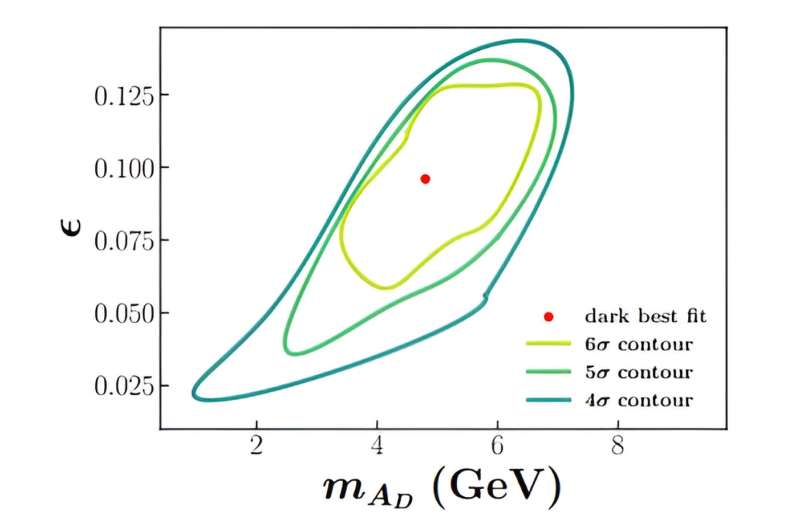This article has been reviewed according to Science X's editorial process and policies. Editors have highlighted the following attributes while ensuring the content's credibility:
fact-checked
preprint
trusted source
proofread
Researchers explore theorized dark photons in connection with dark matter

A team of international researchers, led by experts at the University of Adelaide, has uncovered further clues in the quest for insights into the nature of dark matter.
"Dark matter makes up 84% of the matter in the universe but we know very little about it," said Professor Anthony Thomas, Elder Professor of Physics, University of Adelaide.
"The existence of dark matter has been firmly established from its gravitational interactions, yet its precise nature continues to elude us despite the best efforts of physicists around the world."
"The key to understanding this mystery could lie with the dark photon, a theoretical massive particle that may serve as a portal between the dark sector of particles and regular matter."
Regular matter, of which we and our physical world are made up of, is far less abundant than dark matter: five times more dark matter exists than regular matter. Finding out more about dark matter is one of the greatest challenges for physicists around the world.
The dark photon is a hypothetical hidden sector particle, proposed as a force carrier similar to the photon of electromagnetism but potentially connected to dark matter. Testing existing theories about dark matter is one of the approaches that scientists such as Professor Thomas, along with colleagues Professor Martin White, Dr. Xuangong Wang and Nicholas Hunt-Smith, who are members of the Australian Research Council (ARC) Center of Excellence for Dark Matter Particle Physics, are pursuing in order to gain more clues into this elusive but highly important substance.
"In our latest study, we examine the potential effects that a dark photon could have on the complete set of experimental results from the deep inelastic scattering process," said Professor Thomas.
The team, which includes scientists from the University of Adelaide and colleagues at the Jefferson Laboratory in Virginia, U.S., has published its findings in the Journal of High Energy Physics.
Analysis of the by-products of the collisions of particles accelerated to extremely high energies gives scientists good evidence of the structure of the subatomic world and the laws of nature governing it.
In particle physics, deep inelastic scattering is the name given to a process used to probe the insides of hadrons (particularly the baryons, such as protons and neutrons), using electrons, muons and neutrinos.
"We have made use of the state-of-the-art Jefferson Lab Angular Momentum (JAM) parton distribution function global analysis framework, modifying the underlying theory to allow for the possibility of a dark photon," said Professor Thomas.
"Our work shows that the dark photon hypothesis is preferred over the standard model hypothesis at a significance of 6.5 sigma, which constitutes evidence for a particle discovery."
More information: N. T. Hunt-Smith et al, Global QCD analysis and dark photons, Journal of High Energy Physics (2023). DOI: 10.1007/JHEP09(2023)096. On arXiv: DOI: 10.48550/arxiv.2302.11126
Journal information: arXiv
Provided by University of Adelaide





















